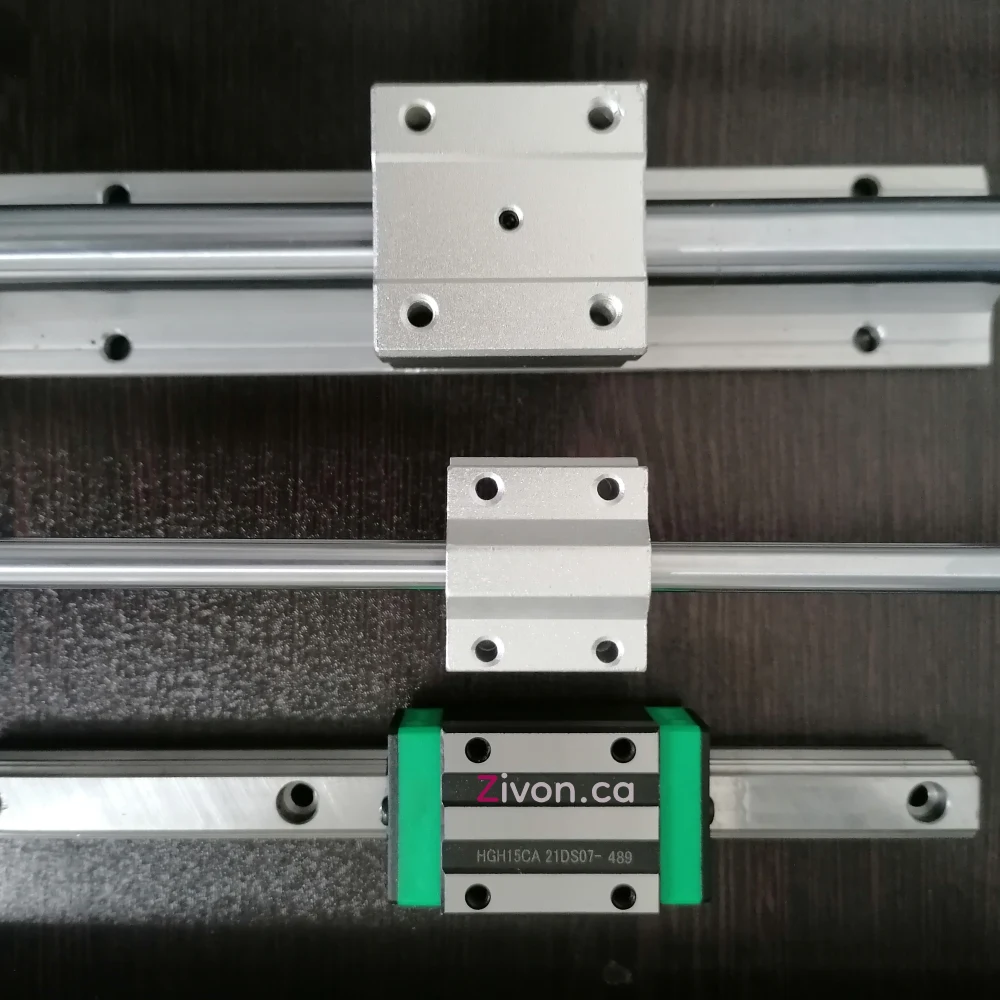Linear Rails vs. Rods in 3D Printing – Which Should You Choose?

When it comes to building or upgrading a 3D printer, the motion system is one of the most important choices you’ll make. Whether you’re chasing higher print accuracy, faster speeds, or just a smoother feel, the type of linear motion guide you choose—linear rails or smooth rods—will make a big difference.
Let’s break down what they are, how they work, and which one is right for your project.
What Are Linear Rails?
Linear rails are precision-machined tracks with a sliding block (carriage) that rides on ball bearings. They provide extremely smooth, rigid, and accurate motion, even at high speeds.
How They Work:
Tiny steel ball bearings circulate inside the carriage, reducing friction and keeping movement consistent. The rail itself is rigid and often made from hardened steel.
Pros:
Exceptional precision and stiffness
Handles higher loads without flex
Minimal play/backlash
Great for fast printing without ringing artifacts
Cons:
Higher cost
Requires accurate mounting surface (flatness is important)
Slightly heavier than rods
What Are Smooth Rods?
Smooth rods are hardened steel or chrome-plated shafts with linear bearings (LM8UU, LM10UU, etc.) or polymer bushings that slide along them.
How They Work:
Bearings or bushings glide along the rod surface. This system is simple, lightweight, and easy to install.
Pros:
Affordable and widely available
Simple to mount and replace
Lighter than rails in many setups
Cons:
Can flex over long spans
Bearings may wear faster
Less rigid—can cause print artifacts at higher speeds
Which One is Smoother?
If mounted correctly, linear rails will feel glass-smooth and consistent even after years of use. Smooth rods can also be smooth, but only if high-quality bearings are used and they’re kept clean and lubricated. Cheap bearings on rods often develop play or stickiness over time.
Which One Is More Affordable?
Smooth rods win in upfront cost—especially for smaller printers.
Linear rails have dropped in price thanks to overseas manufacturers, but good brands like Hiwin still cost more.
When to Use Which
Choose Linear Rails if:
You want to print fast with minimal ghosting/ringing
You’re building a CoreXY, Voron, or high-end custom
Rigidity and long-term precision matter more than cost
Choose Smooth Rods if:
You’re on a budget
Building a Prusa-style or simple Cartesian printer
You value lightweight and easy installation over maximum stiffness
The best Linear Rails and Linear Rods for 3D Printers
Linear Rails:
Budget: MGN12H rails
Premium: Hiwin MGN12H or MGN9H
Tip: Always check for smooth travel before installing—cheap rails can have rough spots
Smooth Rods:
Hardened chrome rods with genuine bearings
Polymer bushings for quieter operation
Avoid soft or uncoated rods—they wear fast
Final Thoughts
Your motion system is the backbone of your 3D printer. Smooth rods are great for starting out or keeping costs low, but if you want to push your printer’s performance, linear rails are the clear winner.






